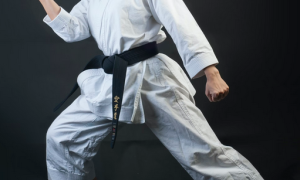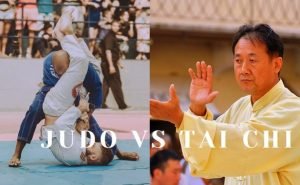
Earning a black belt in judo represents a major milestone in one’s martial arts journey. Many aspiring judoka wonder, “How long does it take to get a black belt in judo?” While the timeline varies for each individual, the average is around 10 years of consistent, dedicated training.
The average time to earn a black belt in judo is approximately 10 years. Most judoka reach black belt after 6-10 years of consistent, dedicated training 2-5 times per week. Timelines vary based on natural ability, training frequency, and starting age. While some gifted students can attain black belt in just 4-6 years, this accelerated pace is less common. Mastery takes time. Focus is best placed on the quality of regular practice under qualified instructors. With perseverance, promotion will come in due course. The lifelong journey itself offers invaluable lessons for judoka.
This article provides an in-depth look at what’s involved in attaining a black belt, the varying timelines, and the importance of focusing on the journey itself rather than the end goal.
Table of Contents
Toggle![]()
The Journey of Getting a Judo Black Belt:
The path to a black belt in judo is filled with enriching techniques to learn, invaluable experiences to be had, and profound personal growth along the way. While timelines vary, the journey shapes students into elite judoka.
Core Techniques
Judo is comprised of a vast curriculum of throws, pins, joint manipulations, chokes, and dynamic forms to be mastered on the road to a black belt:
- Throwing Techniques (Nage Waza)
- Foot sweeps (Ashi Waza)
- Hand throws (Te Waza)
- Hip throws (Koshi Waza)
- Leg/sacrifice throws (Sutemi Waza)
- Grappling Techniques (Katame Waza)
- Pins (Osaekomi Waza)
- Chokes/strangles (Shime Waza)
- Arm locks (Kansetsu Waza)
- Kata
- Nage-no-Kata (Throwing forms)
- Katame-no-Kata (Grappling forms)
- Kime-no-Kata (Self-defense forms)
- Ju-no-Kata (Flexibility forms)
- Kodokan Goshin Jutsu (Self-defense methods)
This broad set of techniques is honed through rigorous, systematic training under qualified instructors. Students experience each technique hundreds or thousands of times to ingrain skills.
Invaluable Experiences
The journey also instills invaluable life lessons and experiences beyond pure technique:
- Physical conditioning (strength, endurance, flexibility)
- Mental discipline (focus, resilience, self-control)
- Competition training
- Sparring against partners across ranks, sizes, and styles
- Frequent testing and promotion evaluations
- Participation in camps, clinics, seminars
- Leadership development (assisting classes, community service)
- Teaching opportunities
- Camaraderie and relationships within the dojo
Personal Growth
Most importantly, the progression from white to black belt catalyzes profound personal growth:
- Cultivation of respect, discipline, patience
- Managing and overcoming adversity
- Persistence despite setbacks and plateaus
- Confidence in skills and abilities
- Leadership, mentorship of junior students
- Passing on judo’s legacy and traditions
The techniques are the foundation, but the experiences and intangible lessons make the journey to the black belt incredibly rewarding. The process shapes judoka physically, mentally, and spiritually.
![]()
How Long Does It Take to Get Each Belt in Judo?
In Judo, practitioners progress through a structured belt system, representing their skill level and experience. Here is an extended timeline for the belt progression over 10 years:
| Belt Color | Order of Progression | Typical Timeframe |
|---|---|---|
| White | Beginner | 0-6 months |
| Yellow | 6th Kyu | 6-12 months |
| Orange | 5th Kyu | 1-2 years |
| Green | 4th Kyu | 2-3 years |
| Blue | 3rd Kyu | 3-4 years |
| Brown | 2nd Kyu | 4-6 years |
| Black | 1st Dan (Shodan) | 6-10 years |
Factors Influencing the Timeline
The time it takes to achieve a black belt in Judo can be influenced by various factors, including:
- Frequency of Training: Consistent training, with multiple sessions per week, can accelerate progression.
- Natural Ability: Some individuals may have a natural aptitude for Judo, allowing them to advance more quickly.
- Age and Starting Point: Younger practitioners and those with prior martial arts experience may progress faster.
- Consistency: Regular and dedicated practice over the years is vital for mastering Judo techniques.
- Competitive Experience: Engaging in Judo competitions can speed up skill development.
- Quality of Instruction: High-quality coaching and a supportive training environment are essential for progression.
Conclusion: Earning a black belt in Judo is a journey that typically spans over 6 to 10 years, depending on individual circumstances and dedication. While the timeline may seem long, it’s essential to focus on continuous improvement, technique mastery, and character development throughout the journey. Remember that the goal is not just the black belt itself but the personal growth and skill acquisition that comes with it.
Is it hard to get a black belt in judo?
This journey is not meant for those seeking quick success; rather, it demands years of unwavering dedication, the willingness to engage in competitive scenarios, resilience in the face of setbacks, and a mindset firmly focused on continual self-improvement.
The Significance of Competition
Judo tournaments are an integral part of a judoka’s journey. They serve as crucibles where skills are honed, and progress is evaluated. Here’s how competition plays a pivotal role:
- Progressive Testing: Judo practitioners must engage in local, regional, and even national tournaments as they advance through the ranks. These competitions provide a real-world platform to test their skills under pressure, helping them grow both technically and mentally.
- Frequency Matters: At lower kyu belt ranks, one may compete 1-2 times per year. As judokas progress to higher ranks, the intensity increases, with some competing 4-6 times per year or more.
- Building Mental Toughness: Success in shiai (tournament competition) showcases a judoka’s mastery of skills and mental toughness, qualities essential for earning a black belt.
- Promotion Criteria: Competition results and medals often carry weight when decisions regarding promotions are made. This system incentivizes students to continually challenge themselves through tournament participation.
Embracing Challenges and Dedication
Achieving a black belt in Judo necessitates mastering various facets:
- Technical Mastery: This involves proficiency in throwing techniques, grappling skills, and perfecting kata forms.
- Physical Fitness: A judoka must develop substantial strength, endurance, and flexibility to execute techniques with power and precision.
- Mental Toughness: Maintaining focus, resilience, and strategic thinking are essential attributes cultivated on the path to a black belt.
- Consistent Training: Training must be regular and purposeful, emphasizing quality over quantity to ensure skill development.
- Goal Setting: Setting both short and long-term milestones helps judokas stay on track and motivated.
- Expert Guidance: Learning from experienced instructors and continually seeking feedback is instrumental in growth.
The Individual Journey
Understanding that progress in Judo is a deeply personal journey is paramount:
- Progress at Your Pace: Each judoka advances at their own pace. It’s crucial to focus on personal development rather than comparing oneself to others.
- Avoiding Discouragement: Comparing your progress to others can lead to discouragement. Instead, maintain a positive mindset and celebrate your personal growth and achievements.
In conclusion, the road to a black belt in Judo is indeed challenging, demanding immense commitment and the ability to overcome unique obstacles. However, those who embrace this journey not only earn a black belt but also experience profound personal growth in skill and character, making the endeavor truly rewarding.
FAQ
Can You Get a Black Belt in Judo in 5 Years?
It is possible but challenging to earn a black belt in judo within 5 years. On average, it takes 7-10 years of consistent training to reach black belt level. However, some factors like natural athleticism, dedication to training multiple times per week, and high-quality instruction can help accelerate progress. With diligent practice and participation in competitions, some judoka can achieve their black belt in as little as 5 years.
Do Belts Matter in Judo?
Yes, belt ranks are an important part of judo. Jigoro Kano, the founder of judo, originated the colored belt system as a way to designate students’ progression in skill and knowledge. Higher belt ranks indicate greater proficiency in judo techniques and principles. While belt ranks should not be the sole focus in judo, they do serve as useful milemarkers for development. Many judo schools have curriculum, testing requirements, and promotions based on the belt system.
Can You Skip Belts in Judo?
It is generally not recommended to skip belt ranks in judo. The belt system follows a logical progression of skills and judo concepts. Skipping belts often leaves gaps in a student’s education and abilities. However, in rare cases, someone with extensive previous martial arts experience may advance through the lower belts more quickly. Any promotions should be evaluated carefully by instructors based on demonstrated technique, knowledge, and ability to ensure the integrity of the belt system. Most judo schools prefer to see students patiently progress through each rank.


